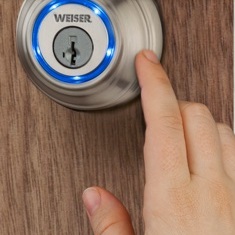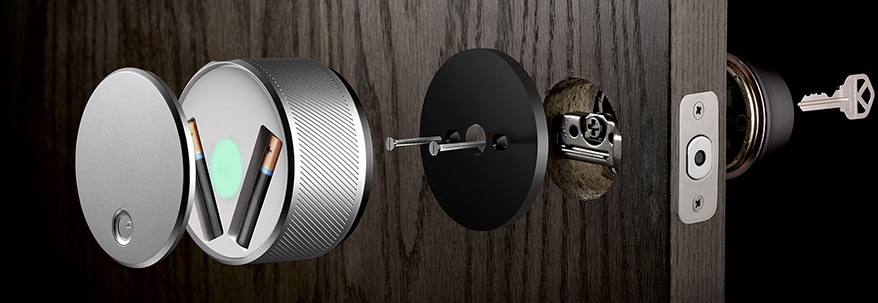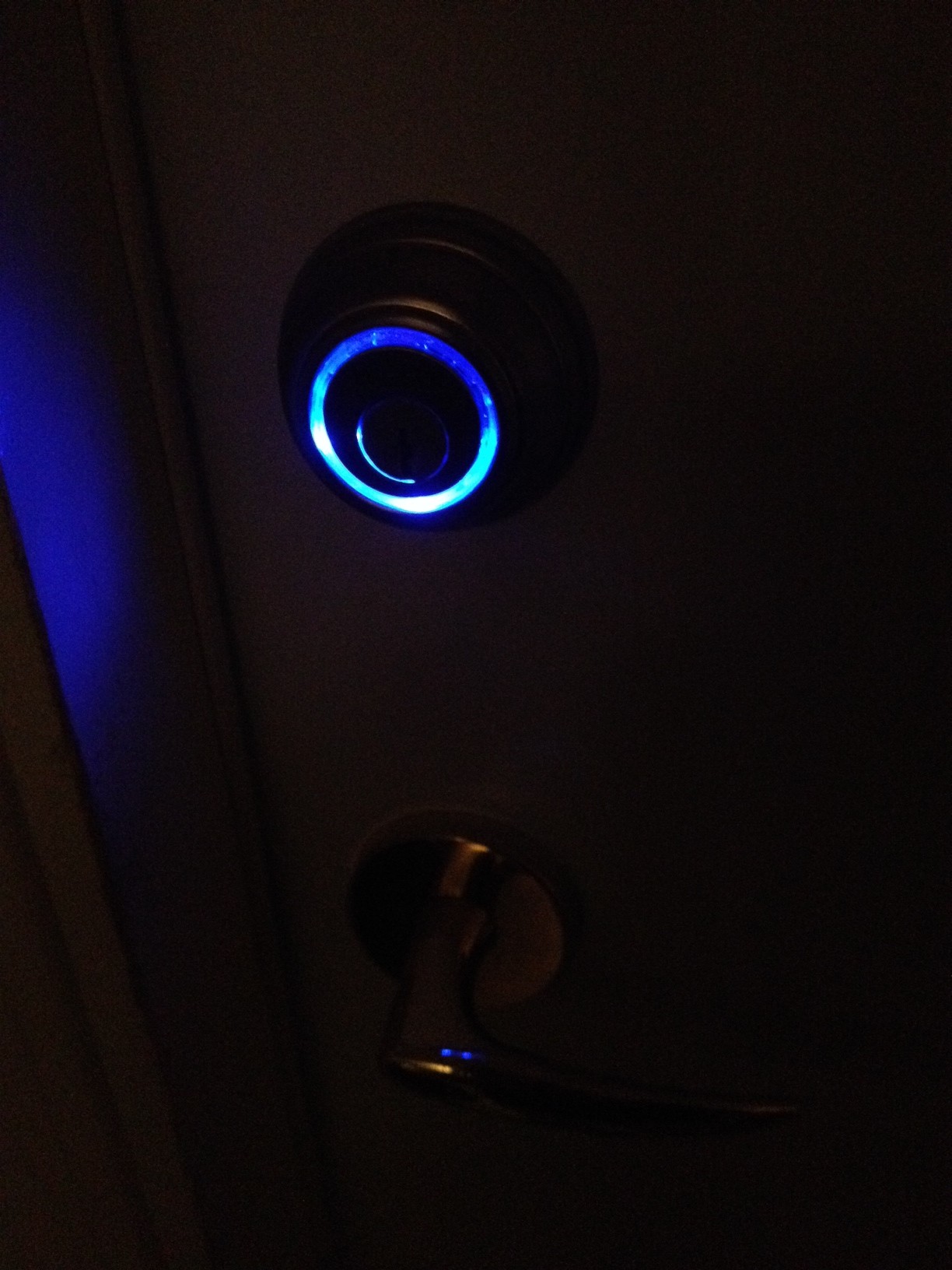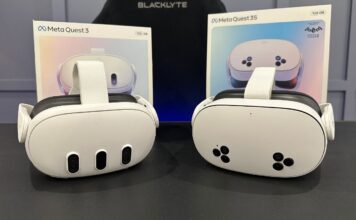 In the first couple parts of the “Setting up a Smart Home” series, I’ve gone fairly high level in my discussions of products and the benefits of them. This third part is going to focus in on making a case for smart locks and then the last part coming in the next few days will discuss cost and power savings.
In the first couple parts of the “Setting up a Smart Home” series, I’ve gone fairly high level in my discussions of products and the benefits of them. This third part is going to focus in on making a case for smart locks and then the last part coming in the next few days will discuss cost and power savings.
In this installment of the series, we’re going to look at Smart Locks. Locks are arguably the most unique smart home feature because they operate so independently from products inside the home. Some can work with your existing hardware, all have long battery life and they all synchronize with your smart devices through Bluetooth rather than living off your WiFi connection. They all have their own little perks too. Let’s take a look at why smart locks are a must in the 21st century smart home.
They’re easy to install
Even though they’ll require you to dust off your handyman skills. smart locks are among the easiest things you can install in your home. In some cases, you can have your new smart lock installed in less time than it will take you to read this blog. I’ve installed 3 smart locks in my home over time:
- Weiser Kevo (Screwdrivers required) – Review (with Install Video)
- Ok-I-Dokeys (Comes with screwdrivers and proprietary tools) – Review (with Install Video)
- August (Screwdriver required) – Review (with Install Video)
Of these, the Kevo took the longest to install at around 15 minutes. By the time I got to the August (approximately 18 months after I’d first installed Kevo,) it took me 10 minutes to install and that was only because I was stopping to film an installation video. Had I not been doing that, the installation would have taken less than 5 minutes. If you have read my previous blogs, you know that I fully admit to having the handyman skills of a gnat. The fact that I’ve been able to easily install these without any hesitation or error is a testament to how easy it actually is.
All 3 of these locks have self-sufficiently synchronized themselves to my phone as well, requiring very little input from me. They all have their own synchronization drills and do all of the work for you.
That isn’t to say that there aren’t a few nuances here. Kevo doesn’t have this issue, but August (pictured below) and Ok-I-Dokeys do tell you a handful of times not to screw the the lock too tight to the door because the mechanisms won’t work properly. There’s a major hardware difference to the two latter ones that I will discuss further down that will make this all make sense.

They require almost no upkeep
Smart Locks require virtually no upkeep outside of ensuring you have a fresh set of batteries in there. Battery life on all of these tend to be pretty good. My Weiser Kevo’s first set of batteries lasted nearly 16 months. Ok-I-Dokeys ran for around 9 months before I had to replace them. For August locks, I admit I don’t have a clear cut answer for you outside of the manufacturer’s life expectancy of approximately one year. I only had a sample and had to return it to the manufacturer once done.
Outside of battery life, you will only have to run the odd firmware update. That’s really something you do be doing on a regular basis though, so just check back occasionally to see if the device needs to be updated.
They don’t live and breathe off your internet connection
 In part 2 of this series, I admitted that I was once left out in the cold (literally) because my internet connection died and I couldn’t get into my garage through my phone. With a smart lock on your front door, that won’t be an issue. All of the major smart locks communicate with your phone through bluetooth. Therefore, you can get into the house (unlike me) at 2 AM if your WiFi is out.
In part 2 of this series, I admitted that I was once left out in the cold (literally) because my internet connection died and I couldn’t get into my garage through my phone. With a smart lock on your front door, that won’t be an issue. All of the major smart locks communicate with your phone through bluetooth. Therefore, you can get into the house (unlike me) at 2 AM if your WiFi is out.
Do some research beforehand as to what you’d prefer as your method of entry to be since they vary. Kevo requires touch activation for the authentication process to begin. August brings entry level geofencing into the equation and can automatically unlock hands free by authenticating you as you approach your door. Ok-I-Dokeys has multiple entry options. Unlocking through your phone requires your physical input through the app. However, the comprehensive starter kit also comes with numerous other unlocking options, such as a key card and a wristband so that you can disconnect and leave your phone at home if you go out for a jog (or if you need to give out multiple access to your home and don’t want to cut keys.) All 3 also allow you to create (and subsequently enable and disable) electronic keys for your friends and family or residence employees.
Just be sure that the batteries in the device aren’t dead.
Some can work with your existing locks
Weiser Kevo requires you to remove and replace your entire deadbolt. Since both sides are connected to each other with wiring, you can’t retrofit your old locks to it either (though I’m sure you can modify all the other locks to the new key if want one key to open everything like many do.) If this doesn’t sound appealing to you, August and Ok-I-Dokeys are internal installation only. This means that you can leave your existing locks intact and all you are replacing is the manual thumbturn with an electronic one. What this means is that you get all the benefits of the smart lock while keeping your existing keys. Naturally, there are some restrictions. You must have a common modern day single bar deadbolt lock. Vintage deadbolts (especially the short ones,) one piece latch deadbolts and double tooth knob locks don’t work.
This is also where my point above about screwing things in too tight comes in. If you install the new thumbturns too close to the door, the mechanism won’t operate. The August won’t be able to turn at all, while the Ok-I-Dokeys (pictured below fully installed) will struggle until it fires back an error message. In both cases, they won’t be able to lock and unlock your door.

You’ll never have to cut keys again
Some years ago, my mom was on vacation and her house sitter called me in a panic because she had dropped her key between the slats of their deck. It was the middle of July and the dog was sitting inside air conditioned, yet confused. Had my mother had a smart lock, I could have sent the sitter an electronic key and had her get into the house that way in mere seconds. Unfortunately, I had to drive the wrong way in rush hour traffic to their nearest hardware store and then drop off keys. I seem to recall this entire debacle lasting about 2 ½ hours when with a smart lock, I could have had it done in 2 ½ minutes.
The beauty of this is that in at least one case (Ok-I-Dokeys,) you don’t even need a smart phone to participate with a guest key. Therefore, if I needed to get my previously smartphone-resistant dad into the house, it would have been no problem at all.
They’re easy to install, easy to use and add a modern twist to your house. Consider making a smart lock the next addition to your home.
This concludes part 3 of the “Setting Up a Smart Home” series. If you’d like to read more, here are the previous installments
Setting up a Smart Home Series Part 1: Assessing your needs
Setting up a Smart Home Series Part 2: Preparing your House
Expect the 4th installment around cost savings in the coming days.






































I switched to a Weiser smart lock a few years ago and it’s been great, but there are few things potential adopters should be aware of. I had a professional installer who mentioned he’s had a number of issues with smart locks on older doors. Basically, if you have to jiggle your current deadbolt, a smart lock is going to require a little more work during the install to ensure it always has perfect clearance —if the locking mechanism sticks, the motor can’t “jiggle” it, it just fails to lock. That can be a problem for remote use. I’ve also found from personal experience that the smart locks I’ve tried (including the Weiser Kevo) lack any interior insulation. That’s the same as with most standard deadbolts, but the issue with the smart lock is it’s powered by a battery pack. Subzero winter temperatures mean that ice cold exterior of the lock transmits that cold to the battery pack and you know what cold does to batteries… One set of batteries lasts me from March through to November. But in the Ontario winter, I go through at least two or three sets of batteries and they can go from green to red overnight if we get a really intense cold set in.
I have been using the Okidokey it works great so far, however my only negative is the company has gone kind of quiet so I am not sure if there is any new development going on or if its End of Life already
Good post on smart locks. Smart locks should be priority for most people thinking about home automation because locks are a critical part of home security, which I believe is one of the best use cases for home automation. My only caution is that anyone thinking about buy one thinks about your future uses for a smart lock and ensure you choose one that fits.
Bluetooth connectivity is common on most smart locks, but consider that not everyone (i.e. your younger kids) has a smartphone with bluetooth. And yes, I know, you could use a bluetooth fob, but kids will be kids and forget that. I’m a big believer in smart locks with a keypad, so that users can easily and securely enter in a code to unlock the door (perfect for kids). For me the biggest feature of a smart lock is being able to remotely monitor the lock (i.e. check if locked it before leaving; and check the last time someone locked/unlocked the door), remotely lock the door, and occassionally (rarely) unlock the door remotely in case of unexpected visit.
Also, you definitely need to do a quick assessment whether your current door lock “fitting” will work with a motorized lock. Brad Moon’s comment above is dead-on and you’ll have headaches with install if your current lock doesn’t smoothly extend.
Lastly, door locks are a critical home security device. Personally, I would recommend buying a smart lock manufactured by a lock company (i.e. Weiser/Kwikset, Schlage, or Yale) rather than lock from a smart device company.
Comments are closed.